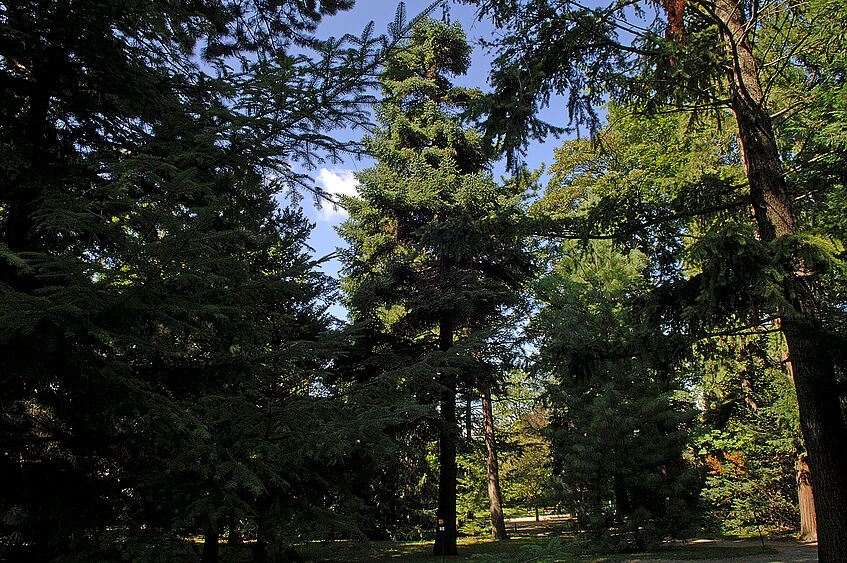Abies pinsapo – Spanish Fir

Abies pinsapo © BGUW_R. Hromniak

Abies pinsapo © BGUW_R. Hromniak
Location in the garden: area 26
The Spanish fir was discovered by the botanist E. Boissier from Geneva in May 1837 in southern Spain. It also occurs in the Yebala mountains at the coast of Morocco, especially on the northern slopes. At lower altitudes it forms mixed forests with holm oak (Quercus ilex) and maritime pine (Pinus pinaster). The Spanish fir is listed in the Red List of Endangered Species of the IUCN 2006 (International Union of Conservation of Nature). Its original habitats in Spain have been largely destroyed, but the species still is found in the southern Spanish UNESCO biosphere reserve Sierra de Grazalema, in the mountainous conifer forests typical of the region.
While the needles of our indigenous fir species, European silver fir (Abies alba), are arranged in two opposite rows, the rigid needles of the Spanish fir are arranged all around the twigs. Because of this difference it cannot be confused with any other species. In English it also has the nickname "hedgehog fir". In cultivation the Spanish fir is undemanding and also grows in rather dry soil. It is sufficiently hardy for milder parts of Central Europe. There are some varieties selected for cultivation in gardens; the cultivar 'Kelleriis' appears to be the best known, and stands out because of its blue needles.
While the cultivation of our indigenous European silver fir has not been successful in the 3rd district of Vienna because of our Pannonian climate, the Spanish fir grows into beautiful specimens at the Botanical Garden of the University of Vienna because of its tolerance of drought and cold.
